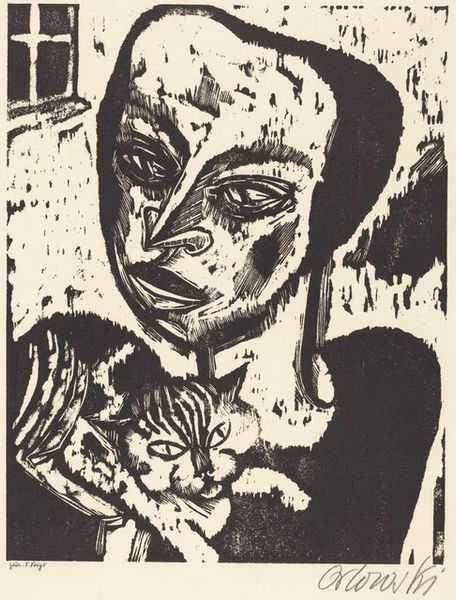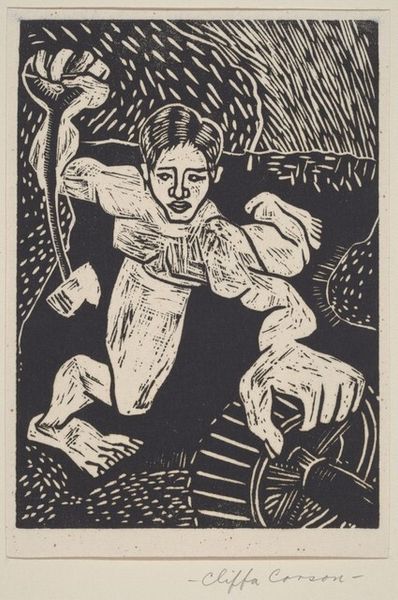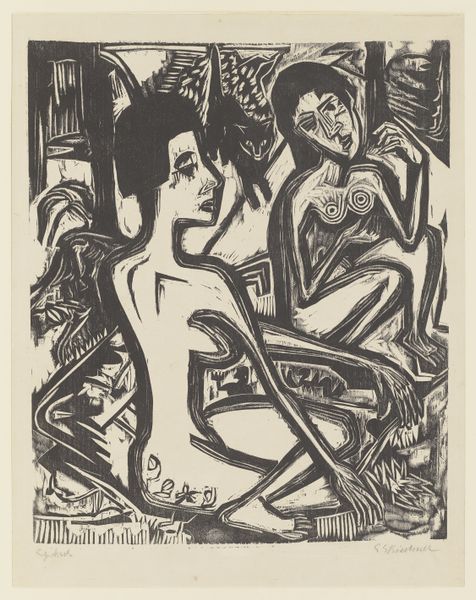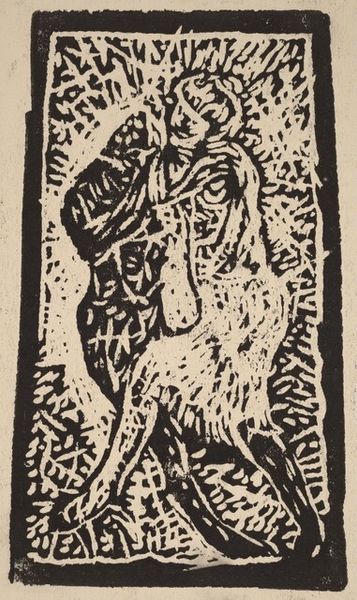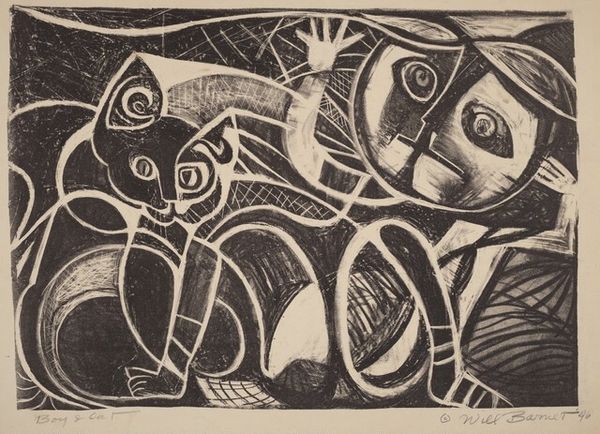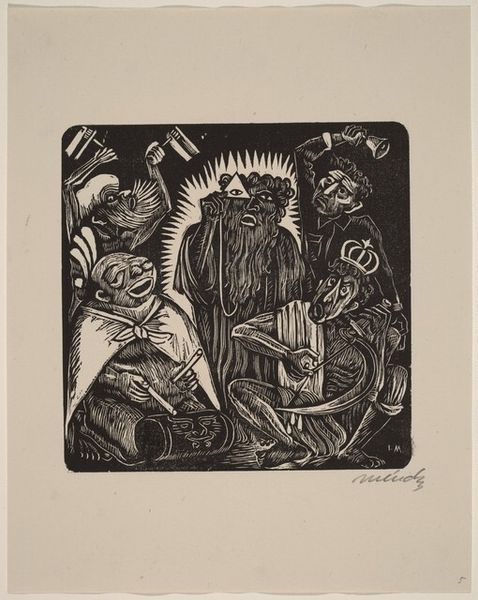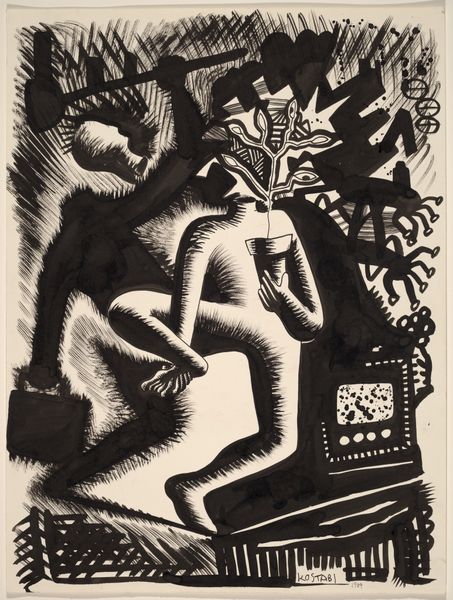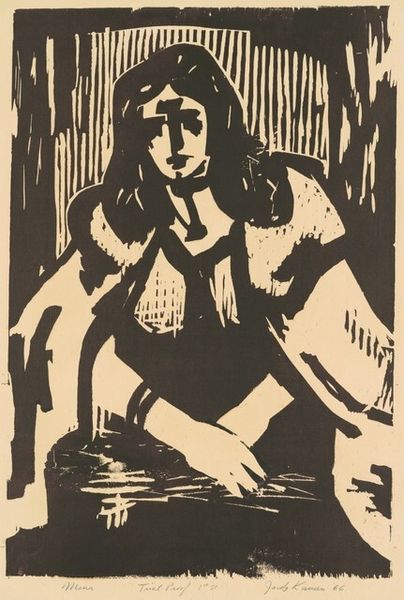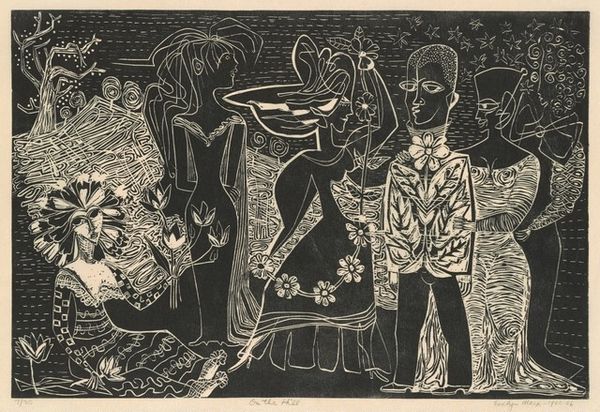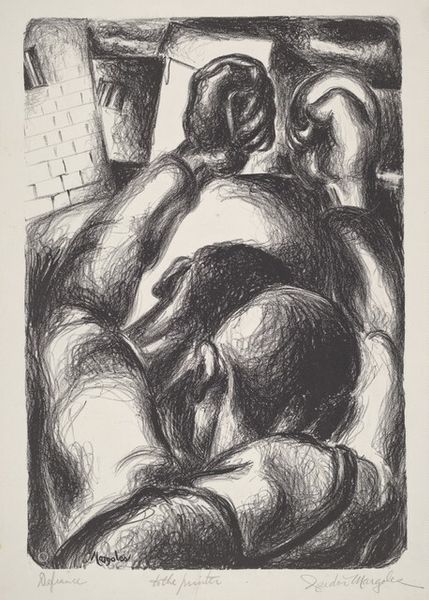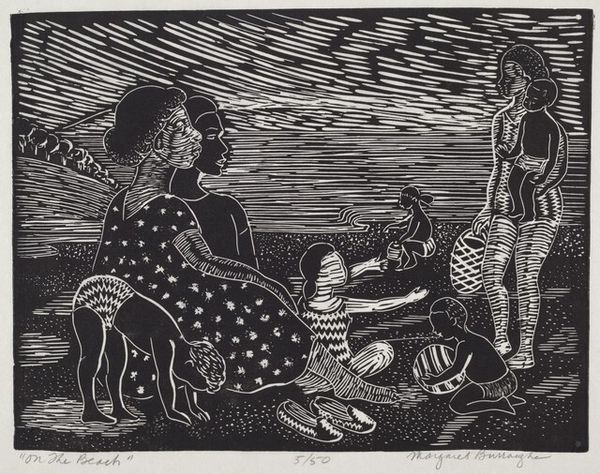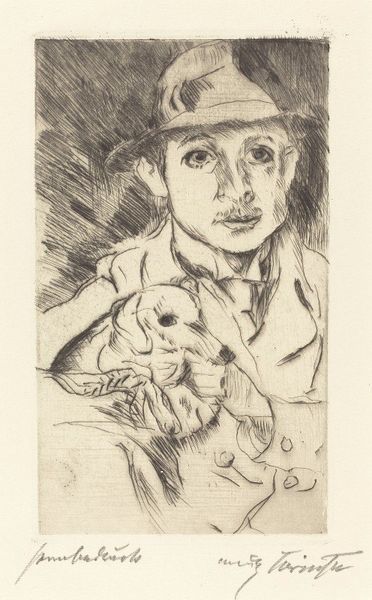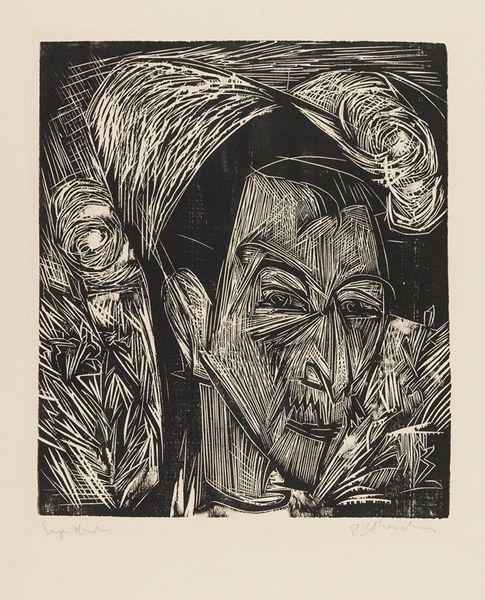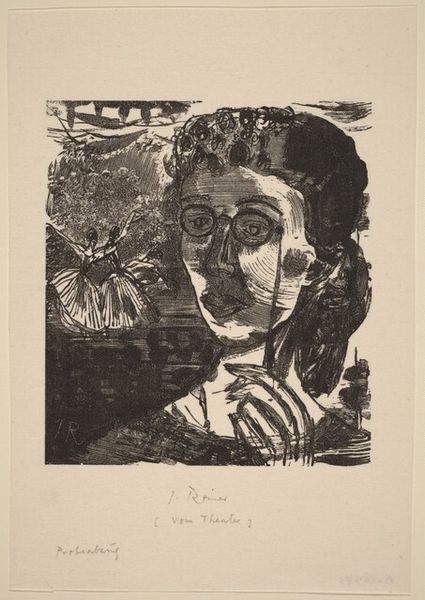
drawing, print, paper, ink
#
portrait
#
drawing
# print
#
caricature
#
figuration
#
paper
#
ink
#
portrait drawing
#
modernism
Dimensions: Image: 278 x 361 mm Sheet: 324 x 405 mm
Copyright: National Gallery of Art: CC0 1.0
Editor: This is Victor Thall’s "Florence and Fiji," a drawing printed around 1939. I’m immediately drawn to the intimacy of the portrait—the way Florence holds Fiji seems to offer a glimpse into their relationship. What complexities or narratives do you see within this seemingly simple scene? Curator: The composition evokes a sense of domesticity that can be easily overlooked. Thinking intersectionally, the work reflects not just the personal connection between a girl and her pet but also invites questions about representation and agency, right? What kind of social structures enable this quiet, comfortable scene? Consider the historical moment, too. This was right before the second world war - how did such political unrest intersect with intimate portraits of domesticity such as this one? Editor: That's a side to the piece that I didn’t initially consider! Seeing it as a statement about access or privilege in 1939 shifts my perspective quite a bit. What do you make of the stylistic choices— the print medium and almost caricatured faces? Curator: The stylized features speak to modernism’s break from traditional representation and hint at a deliberate disruption of the idea of the passive female form, something still being challenged by the work of feminists. What might the simplification of the figures mean in terms of visibility, of seeing and being seen in society during Thall's time? Editor: It almost feels like a challenge to the conventional ideas of beauty or portraiture in the thirties. Thank you, that context is very helpful! I have much to think about regarding the nuances embedded in this portrait. Curator: My pleasure! Keep thinking about how seemingly quiet artworks speak to louder, more disruptive societal dialogues.
Comments
No comments
Be the first to comment and join the conversation on the ultimate creative platform.
